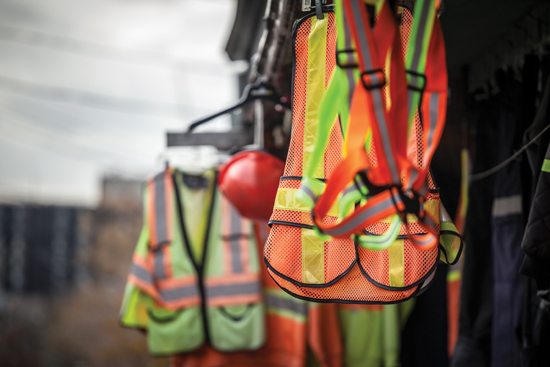
Best practices for achieving a holistic safety culture
August 12, 2021
By
Meaghan Whitney
Strong relationships, connectivity and open and honest communication matter

In a holistic safety culture, a manager’s goal should be to regularly visit every company worksite to speak with team members and foster relationships. (Balkanscat/iStock/Getty Images Plus/Getty Images)
Over the years, safety managers and industrial hygienists have been focused on ensuring workplace health, safety and well-being while personnel are on the job, identifying site and behavioral risks that can eliminate injury and incidents. Most of this activity has naturally prioritized minimizing tangible threats such as gas exposures, trips, falls and more.
While mitigating these risks are critically important, a key lesson from the COVID-19 pandemic is that organizations must expand beyond this fragmented approach that focuses only on the physical aspect of the job. As more team members return to work, businesses must place an equally large emphasis on the psychological toll the pandemic, life and other aspects of the workplace have had on individuals in the past.
From flexible work policies and team member engagement to technological advancements, organizations must adopt a more holistic, human-centred approach, prioritizing all aspects of occupational health, safety and well-being.
The following best practices can serve as an effective starting point for businesses as they adjust to this evolution of industrial safety:
Foster stronger relationships with your people
Organizations and their safety teams should see themselves as responsible community citizens, viewing their employees as people, friends and family instead of human capital.
In a holistic safety culture, a manager’s goal should be to regularly visit every company worksite to speak with team members and foster relationships. Conversations should expand beyond day-to-day responsibilities, aiming to get to know one another, each other’s interests as well as opportunities or struggles outside of work, when appropriate.
Over time, an environment of this nature can help team members feel more empowered about their work and the company’s goals. In addition, people are likely to feel more comfortable discussing at-work safety matters, such as outside factors that may be leading to more at-risk behavior while on-site.
This open dialogue is critical. By meeting your people in-person and encouraging open and transparent discussions, safety managers can significantly mitigate at-risk behaviour and incidents while also improving organizational culture.
Encourage open communication and information sharing
Organizations should create an environment where team members are comfortable speaking openly with one another and sharing information without fear of retribution.
This environment is often created as a result of fostering stronger relationships and building trust between management and employees.
For example, some companies implement safety hotlines where team members can report at-risk behaviours and near misses in a timely manner.
Despite the increased visibility of a mistake or near miss, organizations with a strong and holistic safety culture see team members use these hotlines and similar mechanisms regularly knowing that it will improve health and safety for themselves and their peers. They also typically have the confidence that any information shared won’t result in punishment.
Enhance workplace connectivity
Technology also plays a role in implementing a holistic safety culture. For example, nothing is more powerful in enhancing a lone worker’s confidence and psychological well-being than knowing that somebody is watching over them and there are systems in place to keep them safe while operating in a potentially hazardous environment.
Through a program that implements connected safety – where technology such as cloud-connected wearables, data analytics and artificial intelligence are incorporated – organizations can better watch over their workers in real-time and take a more proactive approach to health and safety.
These technology-driven practices help mitigate team members’ stress or fear of potential incidents, empowering them with greater confidence as they perform their day-to-day responsibilities.
The impacts of holistic health, safety and well-being
Strong relationships, connectivity and open and honest communication matter when it comes to holistic safety.
Team members will have more job satisfaction, work more confidently and put themselves in harm’s way less frequently. In turn, organizations will experience fewer workplace incidents and greater longevity among its workforce.
As a result, achieving a holistic safety culture is one of the most important priorities for safety professionals moving forward.
The process will likely present several challenges and questions where the sharing of best practices and experiences across organizations would be valuable. Businesses and industry leaders are driving these conversations with their peers through a network called Blackline Collective.
Together, we’re breaking down competitive and industrial barriers to advance workplace safety for everyone.
Meaghan Whitney is director, people and engagement at Blackline Safety in Calgary.